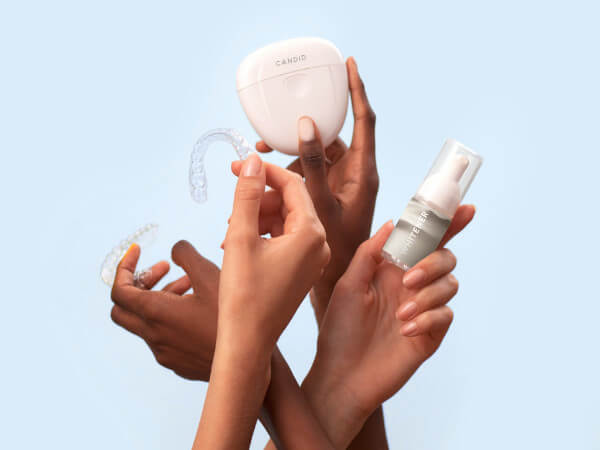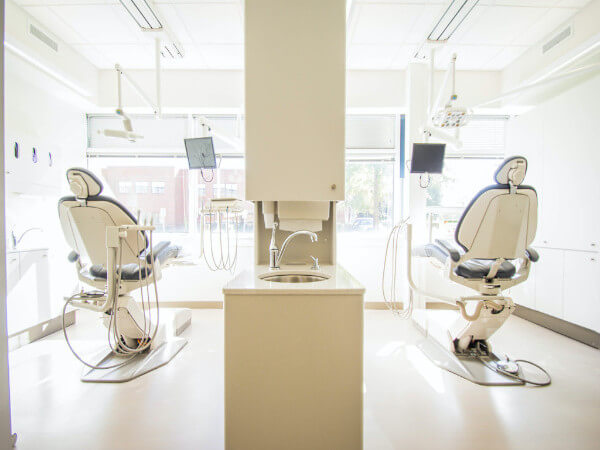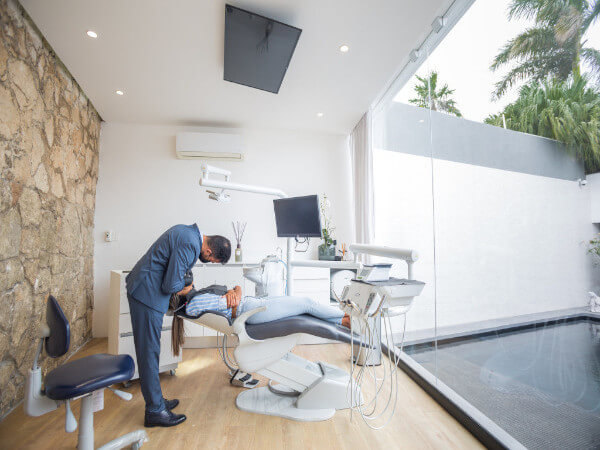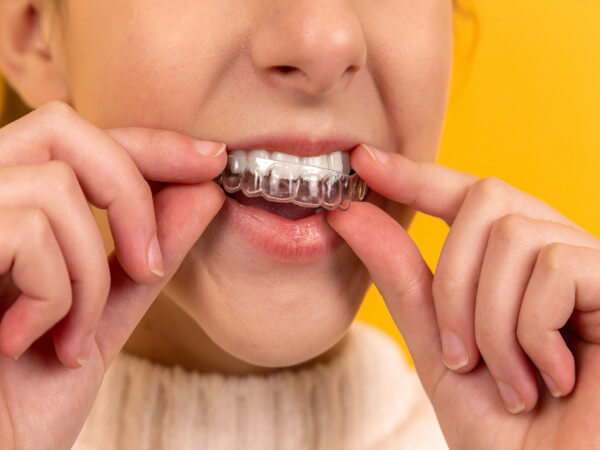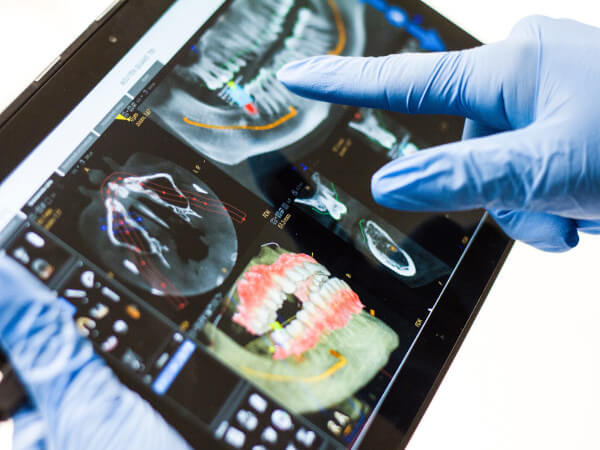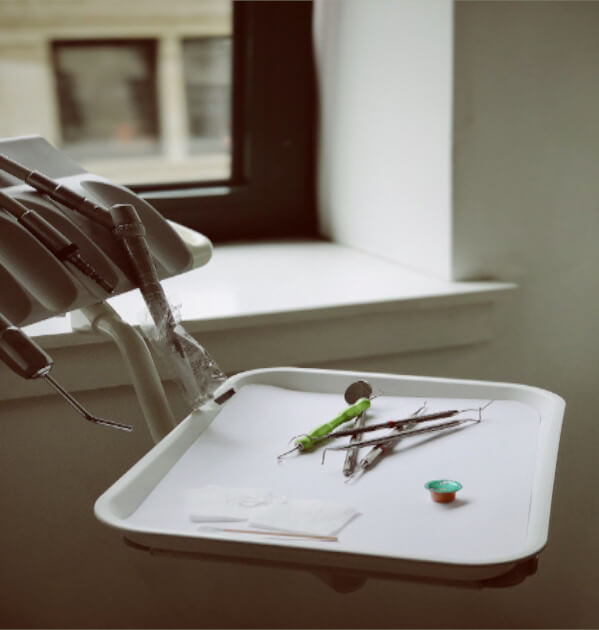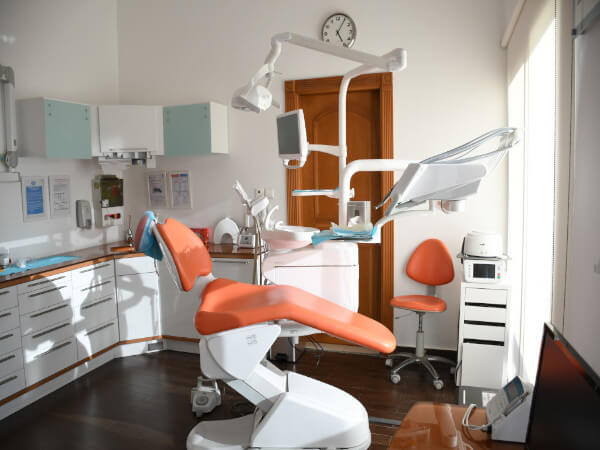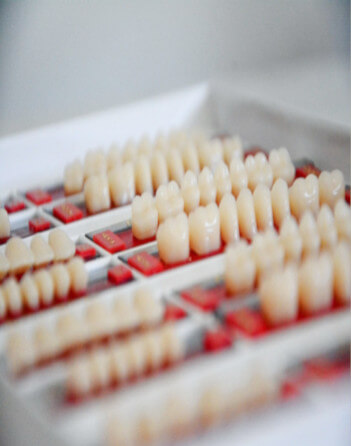
Probiotics are microorganisms (mainly bacteria) that provide benefits to humans – from the prevention of bad breath and cavities to improved gum health.
Probiotics in oral health are supported by years of research, although the number of human clinical trials is limited.
Still, many patients are unaware of the potential benefits that dental probiotics can offer.
What are dental/oral probiotics?
Oral probiotics (or dental probiotics) are specific strains of bacteria known to support a healthy mouth and improve oral health. They encourage the growth of good bacteria and stop the growth of bad (pathogenic) bacteria.
Like the gut, the mouth has its diverse bacterial community known as the oral microbiome. Dental probiotics are similar to gut probiotics in that they use good (commensal) bacteria to improve the health of the microbiome in the mouth.
However, they’re not the same as gut probiotics — oral probiotics are most effective when delivered directly to the mouth via lozenges, chewable tablets, milk, or probiotic drinks. Oral probiotics in the form of swallowable tablets do not seem to be as effective. Some kinds of toothpaste contain oral probiotics.
Oral probiotic supplements deliver these bacterial strains directly to your mouth so that they can colonize the surfaces in your mouth and form biofilms.
The use of oral probiotics may offer health benefits because of the way they boost the immune system of the mouth.
Do oral probiotics really work? Yes, oral probiotics work to improve oral health, especially for people who have existing dysbiosis (a disruption in the balance of bacterial communities) in their oral microbiome.
One study concluded that dental probiotic supplements not only show promise for the prevention or treatment of oral disease but also cause little to no side effects. However, more research is needed to determine the right dosages and delivery for the best results.
Oral vs. Gut Probiotics
The major differences between gut probiotics and oral probiotics are the types of organisms included in each, as well as the method of delivery.
Gut probiotics contain bacterial strains native to the gut.
They are delivered in capsules designed to resist the powerful gastric juices and acidic pH of your digestive system.
Survivability is very important when it comes to gut probiotics. That’s why it’s important to choose a high-quality product with a large number of diverse strains and a high number of Colony Forming Units (or CFUs).On the other hand, oral probiotics, contain beneficial strains specific to the oral microbiome (though there may be some overlap with regular probiotics).
What are the Best Probiotic Strains to Take?
Oral microbiome probiotic strains considered most beneficial to oral health include:
Lactobacillus reuteriLactobacillus salivariusStreptococcus salivarius K12Streptococcus salivarius M18Lactobacillus paracaseiLactobacillus sakei
Oral probiotics are usually given in the form of lozenges, drinks, mouth rinse, or chewable tablets.
They are meant to sit in your mouth while they dissolve, thus allowing enough time to inoculate your oral microbiome.
However, the mouth is connected to the rest of the body — for instance, good gut bacteria established during birth and infancy may potentially reduce a child’s risk of cavities.
Benefits of Dental Probiotics
The benefits of dental probiotics are evident in every part of the mouth because a healthy oral microbiome is the key to oral health.
Oral/dental probiotics may prevent or address most oral diseases, such as:
CavitiesGingivitis/periodontitisOral thrush (Candidiasis)Bad breathRespiratory infectionsTonsillitisOral cancer
The good bacteria in oral probiotics can create biofilms to replace those created by undesirable bacteria. These new biofilms not only support the health of teeth and gums and reduce inflammation, but they can also block bad bacteria from reaching enamel or gum tissue to wreak havoc.
1. Oral Probiotics for Cavities
Cavities, or “dental caries”, develop when clusters of bacteria, called plaque, form on teeth and feed on sugar molecules, and excrete acids that break down enamel.
If you address it early in the process, you can reverse some cavities with dietary and lifestyle changes. Left unchecked, this tooth decay can irreversibly damage the dentin and enamel and require a filling, root canal, or tooth extraction.
Oral probiotic supplements may prevent cavities and plaque buildup.
The best dental probiotics for cavities include:
L. acidophilusL. paracaseiL. rhamnosusL. reuteriL. caseiL. salivariusBifidobacillusS. thermophilus
Research shows probiotics for teeth can prevent cavities by:
Improving the immunity of the mouth Producing antibacterial compounds to fight certain cavity-causing bacteriaPreventing bad bacteria from attaching to the teethAltering the pH of the mouth to stop cavity growthChanging the saliva quality to improve remineralization of enamel
One of the most problematic bacteria in the development of cavities is called Streptococcus mutans. However, an oral probiotic strain called Streptococcus A12can outcompete the harmful version and prevent plaque buildup.
As of mid-2020, 8 randomized, controlled trials on oral probiotics for dental caries have been completed. 75% of these studies found that the use of dental probiotics reduced cavities.
However, the doses, strains, study methods, and lengths of study were inconsistent.
It’s not possible to say for sure exactly what dose, probiotic strain, or length of treatment will effectively reverse or prevent cavities.
2. Oral Probiotics for Gingivitis & Periodontitis
Periodontitis (gum disease) is a chronic inflammatory condition that affects 42% of adults in the US. It is associated with higher rates of diabetes, Alzheimer’s, heart disease, and more.
Once you develop gum recession, you can only halt gum disease, not reverse it. That’s why it’s so important to stop gum disease before it does lasting damage.
At least 11 clinical trials show that oral probiotics may improve gum disease symptoms.
The best oral probiotics for gum disease are:
L. reuteriL. brevis
Improvements in gum disease from oral probiotics include:
Reduced plaque under the gum lineLess bleeding gumsLower gingival index (a marker of gingivitis)Smaller pocket depth (a measurement your dentist uses to spot periodontitis)
Using dental probiotics as part of your oral care routine may reduce inflammation, stop bleeding gums, and crowd out the bacteria that cause gingivitis.
L. reuterican improve symptoms of gingivitis and gum bleeding, while L. brevis seems to reduce inflammation.
3. Oral Probiotics for Candidiasis/Oral Thrush
Oral thrush, or oral candidiasis, is a fungal condition in which candida fungus (usually C. albicans) overgrows and forms white spots on your tongue. Burning, redness, and dry mouth can result.
This fungal overgrowth is a common symptom of dysbiosis in the oral microbiome.
The best way to combat this condition is to stop consuming the sugars and carbs that feed the candida yeast. Along with a dietary change, high-quality oral probiotics may help prevent or reverse oral thrush.
Changing your diet will stop candida growth, as it will no longer have an adequate food source. The influx of beneficial bacteria from the oral probiotic will crowd out any remaining candida microbes.
The best oral probiotics for oral thrush/candidiasis are:
Lactobacillus spp.S. salivarius K12
Lab research shows that dental probiotics including Lactobacillus species can stop candida from forming a biofilm in the mouth.
A 2020 clinical trial found that 30 days of the oral probiotic S. salivarius K12 decreased oral thrush symptoms. It also improved inflammation of oral tissue caused by denture stomatitis, a bacterial overgrowth on dentures.
4. Oral Probiotics for Halitosis/Bad Breath
3 studies on dental probiotics for halitosis found that good probiotics can reduce VSCs (volatile sulfur compounds) that cause bad breath. An additional study saw no VSC improvement although breath odor improved.
Oral probiotics are a much better remedy for bad breath than mouthwash. Most mouthwash kills not only bad bacteria but good along with it.
Dental probiotics may stop bad breath by reducing the compounds that cause halitosis.
The best dental probiotics for bad breath include:
S. salivarius K12L. salivariusL. reuteriL. casei
5. Oral Probiotics for Respiratory Infections
Respiratory infections are infections of the respiratory tract caused by a variety of viruses or bacteria. Common examples include the common cold, sinusitis, strep throat, and bronchitis.
Oral probiotics may reduce the risk of respiratory infections, particularly in children.
The best oral probiotics for respiratory infections are:
S. salivarius K12S. salivarius M18L. reuteriL. sakeiL. paracaseiL. gasseri
A 2016 animal study found that L. gasseri was able to crowd out significant Group A Streptococcus bacteria responsible for infections like strep throat, scarlet fever, and sore throat.
Animals who received the oral probiotics contracted Group A strep infections 4 times less frequently and were 15 times less likely to die from the infections than the control animals.
An oral probiotic supplement containing 5 strains of probiotics reduced the risk of children getting a respiratory tract infection by 76% in a 2018 clinical trial.
6. Oral Probiotics for Tonsillitis
Tonsillitis is inflammation of the tonsils, two oval-shaped pads of tissue at the back of the throat.
Oral probiotics may reduce symptoms of recurrent tonsillitis.
The best probiotic for tonsillitis is S. salivarius K12.
In a 2020 clinical trial, an oral probiotic given for 30 days provided “rapid relief” for symptoms of recurrent tonsillitis. It also resulted in a marked improvement in the microbiome of the upper respiratory tract.
7. Oral Probiotics for Oral Cancer
Oral cancer may develop, in part, due to harmful bacteria in the mouth.
Correcting dysbiosis of the oral microbiome may decrease the risk of developing oral cancer, although no clinical trials with human patients have confirmed this theory.
According to two reviews published in 2020, oral probiotic strains that may stop oral cancer growth include:
L. rhamnosus GGL. plantarumAcetobacter syzigiiL. salivarius REN
More research is needed to draw serious conclusions.
There is no scientific evidence that oral probiotics can treat or reverse oral cancer in humans.
How long do oral probiotics take to work?
Depending on the severity of your dysbiosis, oral probiotics may begin working in as little as 1 week.
Most studies on oral probiotics have been conducted for 2-4 weeks. Studies tracking cavity development have been longer, from 9-12 months.
When advising a patient to take oral probiotics, I generally recommend 2-3 months as a baseline treatment period.
How to Take Oral Probiotics
The most effective ways to take probiotics are via chewable tablets or lozenges. These allow the beneficial bacteria to be delivered directly to the surfaces of your mouth where biofilms are formed by bacteria.
For good bacteria to thrive, you must also eat plenty of prebiotics. Prebiotics are fibers that feed probiotic bacteria.
Prebiotic foods include:
OnionsRaw dandelion greensGarlicArtichokesBananas (especially unripe)Chicory rootAsparagus LeeksRaw jicamaApplesCocoaFlaxseeds
Taking probiotics is unlikely to be effective without prebiotics present in the mouth. In other words, you must consume prebiotics every day for your probiotics to work.
Q
Should I take oral probiotics in the morning or at night?
A
The best time to take oral probiotics is in the morning after finishing your oral hygiene routine.
How to Choose the Best Oral Probiotic
When choosing an oral probiotic supplement, look for products with a high strain count, which is measured in colony-forming units (CFUs). Find a supplement with at least 3 billion CFUs.
Keep in mind, though, that oral probiotics will usually have a lower strain and CFU count than regular probiotics.
Look for a probiotic with beneficial strains, such as S. salivarius K12S. salivarius M18L. rhamnosus, and L. reuteri.
Oral probiotics should not be swallowed but chewed or made to melt in the mouth.
You can buy dental probiotics on Amazon or directly from manufacturers. Most oral probiotics are not available at local drugstores or grocery stores.
Probiotic Foods
You may also try adding foods that contain probiotic bacteria to your diet to enhance the benefits of oral probiotic supplements.
Common probiotic foods include:
KombuchaKimchiYogurtMisoNattoSauerkrautKefir
There are no published studies that prove these foods will act the same as targeted probiotic supplements for oral health. However, they may offer general benefits to your oral and overall health.
Side Effects of Dental Probiotics
Dental probiotics should not cause side effects. One of the benefits of dental probiotics is that they are “extremely safe” for human use.
Gut probiotic side effects include stomach upset and bloating. No symptoms have been identified for oral probiotic side effects.
If you have a condition that compromises immunity, such as HIV/AIDS, cancer, or inflammatory bowel disease, always talk to your doctor and/or dentist before starting a new probiotic regimen.
The Oral Microbiome
Your oral microbiome is made up of over 700 known species of bacteria that live in the biofilms of your mouth (on the teeth, lips, tongue, and upper/lower palates).
It serves as your mouth’s immune system — a healthy oral microbiome can reduce rates of tooth decay, periodontal disease, oral thrush, and bad breath. Dysbiosis (imbalance) of the oral microbiome can result in inflammation and a higher risk for any oral disease.
There’s a lot of talk about the gut microbiome and how important it is to your whole body and digestive health, but your oral microbiome may be equally as important.
Balancing your oral microbiome has benefits beyond your mouth, too. Healthy microbial colonies in the mouth can reduce your risk of many systemic diseases. A dysbiotic oral microbiome is associated with problems like:
CancerDiabetesHeart diseaseAdverse pregnancy outcomes (APOs) like miscarriage, preeclampsia, and low birth weightObesityAlzheimer’s diseaseCOPDPneumoniaCognitive impairment
There are specific strains of oral microbes associated with each of these diseases. With predictive testing, your dentist can even test for the presence of these in your mouth and identify if you have an increased risk for these diseases.
Your oral microbiome is the gateway to the rest of your body. Everything that goes in through your nose and mouth passes through your oral cavities, which are home to millions of microbes that make up your oral microbiome.
In addition to the microbes that live in your mouth, you swallow over one trillion microbes every single day. These pass through your oral microbiome and travel down to your gut microbiome, in the process inoculating and reseeding both.
Depending on the health of your oral microbiome, certain microbes make it through this initial checkpoint and have a major say in your overall health.
This just speaks to the importance of a healthy oral microbiome.
I can’t state this enough: Whether your mouth maintains an ideal ratio of good-to-bad bacteria directly determines your oral and dental health, as well as the health of your entire body.
re dental/oral probiotics right for you?
Using oral probiotics for dental health cannot replace oral hygiene, a healthy diet, or 6-month cleanings. However, used with other oral care strategies, dental probiotics can provide a significant benefit to your oral and overall health.
The health of your oral microbiome impacts the rest of the body in ways we are only just beginning to fully understand. Your body is a complex system of interactions, none of which are isolated from the rest of the body.
As I always say, what happens in the mouth happens in the body.
ReferencesLaleman, I., & Teughels, W. (2015). Probiotics in the dental practice: a review. Quintessence Int, 46(3), 255-64. Full text: https://pdfs.semanticscholar.org/56ce/6fca0dc78db04ee023991384650b23d6748c.pdfBonifait, L., Chandad, F., & Grenier, D. (2009). Probiotics for oral health: myth or reality?. Journal of the Canadian Dental Association, 75(8). Full text: https://www.cda-adc.ca/jcda/vol-75/issue-8/585.pdfAnanya, B., Rani, S. L., & Brundha, M. P. (2020). Knowledge and attitude of probiotics among outpatients visiting dental operatory. Drug Invention Today, 14(2). Abstract: https://web.a.ebscohost.com/abstract?direct=true&profile=ehost&scope=site&authtype=crawler&jrnl=09757619&AN=142963164&h=0nGPW0bD6kP4QHhY21PmF0FPXkSIc7rqid%2fjhWJd57%2fBVPkwhw7tWtb6oSKLX5vnPAw946FY1enN8SdMvVG0FA%3d%3d&crl=c&resultNs=AdminWebAuth&resultLocal=ErrCrlNotAuth&crlhashurl=login.aspx%3fdirect%3dtrue%26profile%3dehost%26scope%3dsite%26authtype%3dcrawler%26jrnl%3d09757619%26AN%3d142963164Darwazeh, T., & Darwazeh, A. (2011). Probiotics and oral disease: An update. Smile Dental Journal, 110(422), 1-6. Abstract: https://platform.almanhal.com/GoogleScholar/Details/?ID=2-21358#Mahasneh, S. A., & Mahasneh, A. M. (2017). Probiotics: a promising role in dental health. Dentistry journal, 5(4), 26. Full text: https://www.ncbi.nlm.nih.gov/pmc/articles/PMC5806962/Dewhirst, F. E., Chen, T., Izard, J., Paster, B. J., Tanner, A. C., Yu, W. H., … & Wade, W. G. (2010). The human oral microbiome. Journal of bacteriology, 192(19), 5002-5017. Full text: https://jb.asm.org/content/jb/192/19/5002.full.pdfJindal, G., Pandey, R. K., Singh, R. K., & Pandey, N. (2012). Can early exposure to probiotics in children prevent dental caries? A current perspective. Journal of oral biology and craniofacial research, 2(2), 110-115. Full text: https://www.ncbi.nlm.nih.gov/pmc/articles/PMC3942020/Chugh, P., Dutt, R., Sharma, A., Bhagat, N., & Dhar, M. S. (2020). A critical appraisal of the effects of probiotics on oral health. Journal of Functional Foods, 70, 103985. Full text: https://www.sciencedirect.com/science/article/pii/S1756464620302097Shakib, P., Rouhi, S., & Zolfaghari, M. R. (2020). The role of probiotics in preventing dental caries. Plant Biotechnology Persa, 2(1), 55-58. Full text: http://pbp.medilam.ac.ir/article-1-40-en.pdfHuang, X., Palmer, S. R., Ahn, S. J., Richards, V. P., Williams, M. L., Nascimento, M. M., & Burne, R. A. (2016). A highly arginolytic Streptococcus species that potently antagonizes Streptococcus mutans. Applied and environmental microbiology, 82(7), 2187-2201. Full text: https://www.ncbi.nlm.nih.gov/pmc/articles/PMC4807514/Krasse, P., Carlsson, B., Dahl, C., Paulsson, A., Nilsson, A., & Sinkiewicz, G. (2006). Decreased gum bleeding and reduced gingivitis by the probiotic Lactobacillus reuteri. Swedish dental journal, 30(2), 55-60. Abstract: https://pubmed.ncbi.nlm.nih.gov/16878680/Riccia, D. D., Bizzini, F., Perilli, M. G., Polimeni, A., Trinchieri, V., Amicosante, G., & Cifone, M. G. (2007). Anti‐inflammatory effects of Lactobacillus brevis (CD2) on periodontal disease. Oral diseases, 13(4), 376-385. Abstract: https://pubmed.ncbi.nlm.nih.gov/17577323/Matsubara, V. H., Wang, Y., Bandara, H. M. H. N., Mayer, M. P. A., & Samaranayake, L. P. (2016). Probiotic lactobacilli inhibit early stages of Candida albicans biofilm development by reducing their growth, cell adhesion, and filamentation. Applied microbiology and biotechnology, 100(14), 6415-6426. Abstract: https://pubmed.ncbi.nlm.nih.gov/27087525/Passariello, C., Di Nardo, F., Polimeni, A., Di Nardo, D., & Testarelli, L. (2020). Probiotic Streptococcus salivarius Reduces Symptoms of Denture Stomatitis and Oral Colonization by Candida albicans. Applied Sciences, 10(9), 3002. Abstract: https://www.mdpi.com/2076-3417/10/9/3002Mansour, N. M., & Abdelaziz, S. A. (2016). Oral immunization of mice with engineered Lactobacillus gasseri NM713 strain expressing Streptococcus pyogenes M6 antigen. Microbiology and immunology, 60(8), 527-532. Abstract: https://pubmed.ncbi.nlm.nih.gov/27301486/Campanella, V., Syed, J., Santacroce, L., Saini, R., Ballini, A., & Inchingolo, F. (2018). Oral probiotics influence oral and respiratory tract infections in pediatric population: a randomized double-blinded placebo-controlled pilot study. Eur Rev Med Pharmacol Sci, 22(22), 8034-8041. Full text: https://www.researchgate.net/profile/Jamaluddin_Syed/publication/329573879_Oral_probiotics_influence_oral_and_respiratory_tract_infections_in_pediatric_population_A_randomized_double-blinded_placebo-controlled_pilot_study/links/5c22138c458515a4c7f71fd9/Oral-probiotics-influence-oral-and-respiratory-tract-infections-in-pediatric-population-A-randomized-double-blinded-placebo-controlled-pilot-study.pdfIlchenko S.I., Fialkovskaya A.A., & Ivanus S.G. (2020). EFFICIENCY OF THE RESPIRATORY PROBIOTIC STREPTOCOCCUS SALIVARIUS K12 IN CHILDREN WITH RECURRENT TONSILLITIS. Actual Infectology, 8(2), 25-29. Abstract: http://ai.zaslavsky.com.ua/article/view/199732La Rosa, G. R. M., Gattuso, G., Pedullà, E., Rapisarda, E., Nicolosi, D., & Salmeri, M. (2020). Association of oral dysbiosis with oral cancer development. Oncology Letters, 19(4), 3045-3058. Full text: https://www.ncbi.nlm.nih.gov/pmc/articles/PMC7079586/Kamaluddin, W. N. F. W. M., Rismayuddin, N. A. R., Ismail, A. F., Aidid, E. M., Othman, N., Mohamad, N. A. H., & Arzmi, M. H. (2020). Probiotic inhibits oral carcinogenesis: a systematic review and meta-analysis. Archives of Oral Biology, 104855. Abstract: https://www.sciencedirect.com/science/article/abs/pii/S0003996920302338Stowik, T. A. (2016). Contribution of Probiotics Streptococcus salivarius Strains K12 and M18 to Oral Health in Humans: A Review. Full text: https://opencommons.uconn.edu/cgi/viewcontent.cgi?referer=&httpsredir=1&article=1484&context=srhonors_thesesLim, Y., Totsika, M., Morrison, M., & Punyadeera, C. (2017). Oral microbiome: a new biomarker reservoir for oral and oropharyngeal cancers. Theranostics, 7(17), 4313. Full text: https://www.ncbi.nlm.nih.gov/pmc/articles/PMC5695015/Leishman, S. J., Lien Do, H., & Ford, P. J. (2010). Cardiovascular disease and the role of oral bacteria. Journal of oral microbiology, 2(1), 5781. Full text: https://www.ncbi.nlm.nih.gov/pmc/articles/PMC3084572/Teixeira, F. B., Saito, M. T., Matheus, F. C., Prediger, R. D., Yamada, E. S., Maia, C. S., & Lima, R. R. (2017). Periodontitis and Alzheimer’s disease: a possible comorbidity between oral chronic inflammatory condition and neuroinflammation. Frontiers in aging neuroscience, 9, 327. Full text: https://www.ncbi.nlm.nih.gov/pmc/articles/PMC5649154/Olsen, I. (2015). From the acta prize lecture 2014: The periodontal-systemic connection seen from a microbiological standpoint: Summary of the Acta Odontologica Scandinavia Price lecture 2014 presented at the meeting of the IADR/Pan European region in Dubrovnik, September 10–13. 2014. Acta Odontologica Scandinavica, 73(8), 563-568. Abstract: https://pubmed.ncbi.nlm.nih.gov/25891035/Kumar, V., Bhatia, M., & Kumar, A. H. (2020). Microbes from mouth to gut impacting probiotics to antibiotics. Journal of Natural Science, Biology and Medicine, 11(2), 83. Abstract: http://www.jnsbm.org/article.asp?issn=0976-9668;year=2020;volume=11;issue=2;spage=83;epage=84;aulast=Kumar
The post Benefits of Oral Probiotics & Best Strains appeared first on Ask the Dentist.
Did you miss our previous article…
https://dentistintulum.com/?p=220
